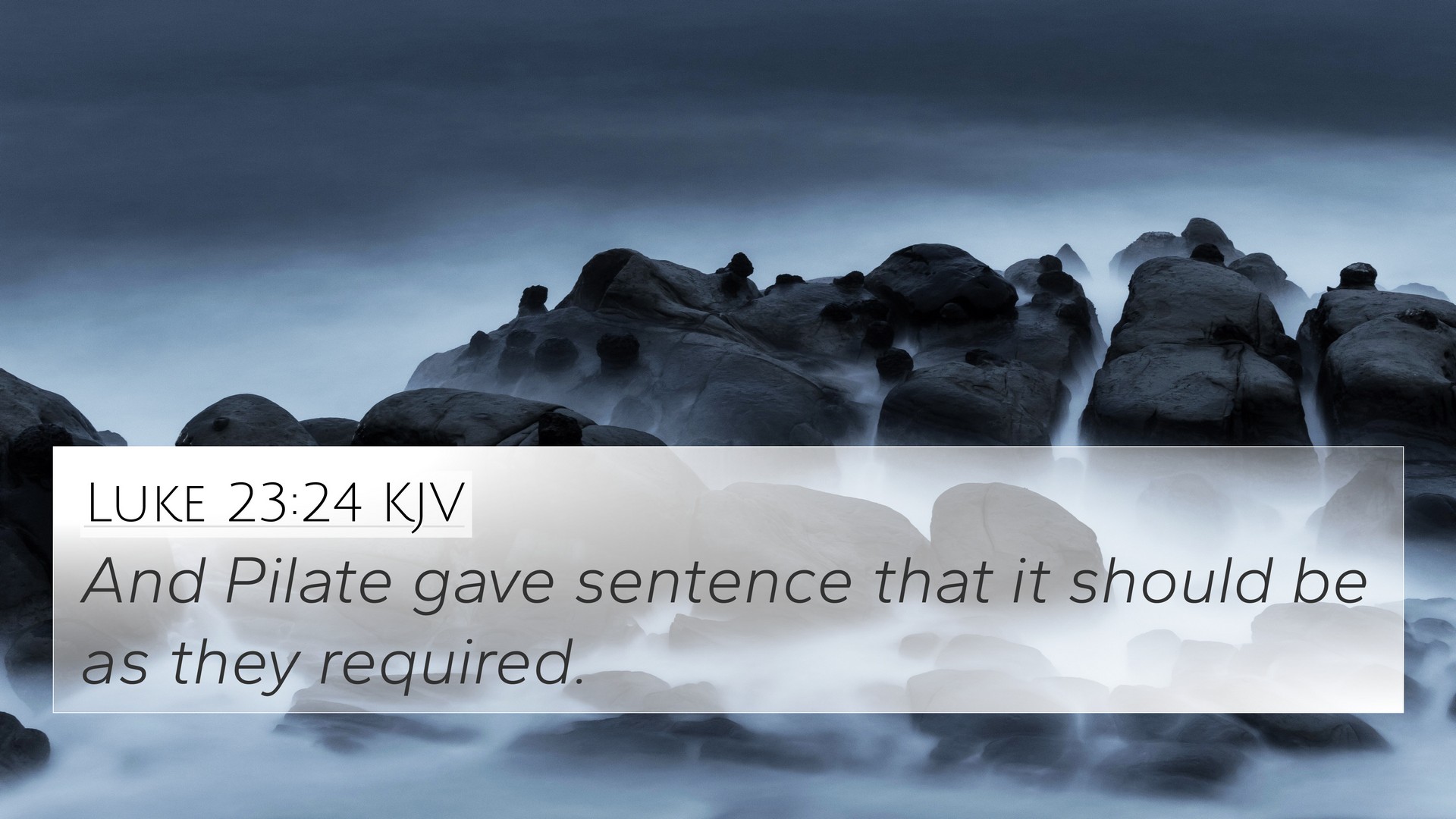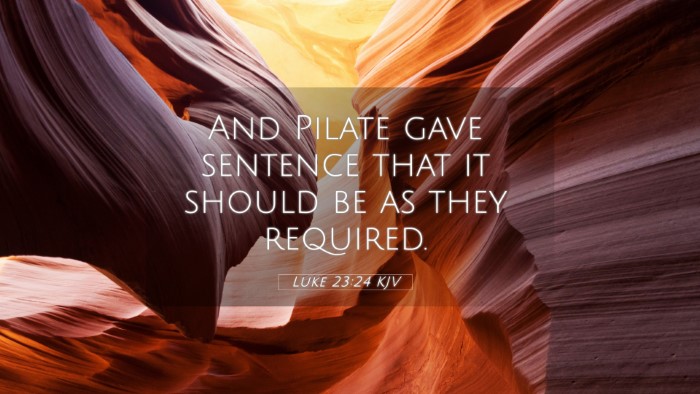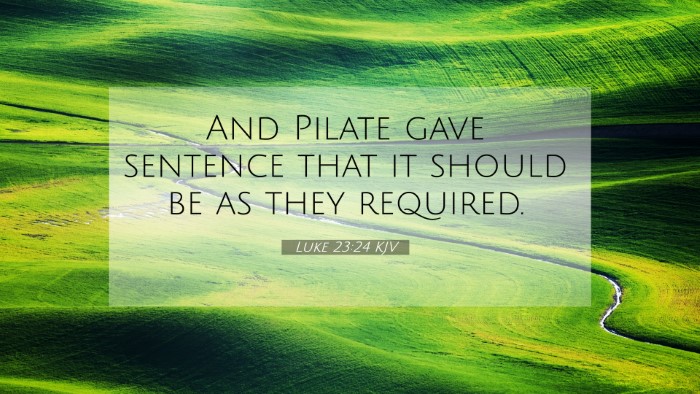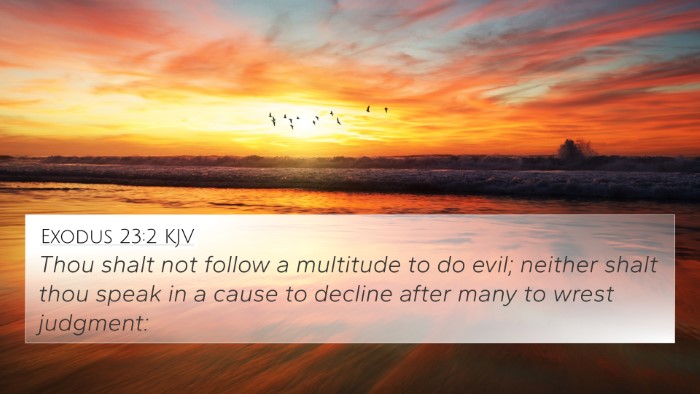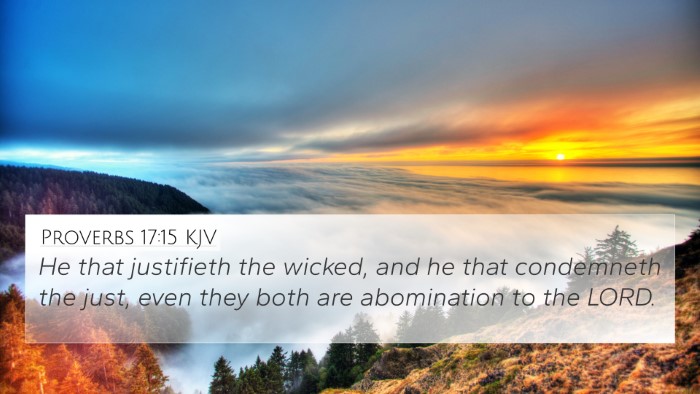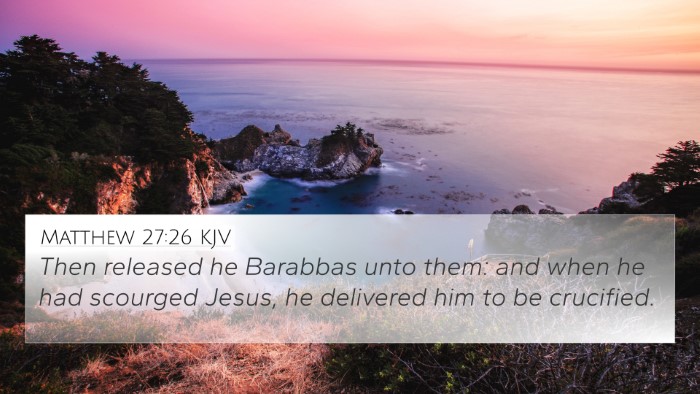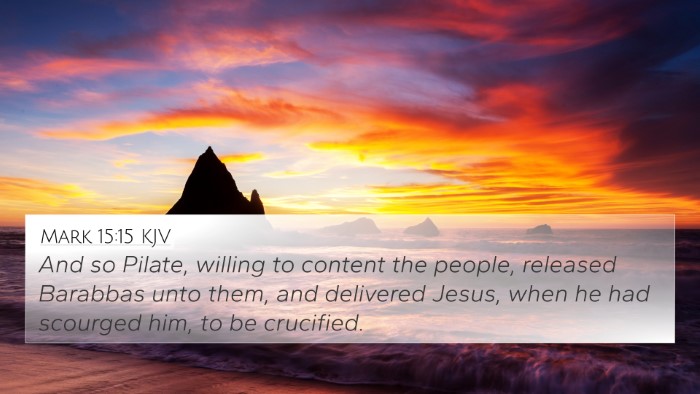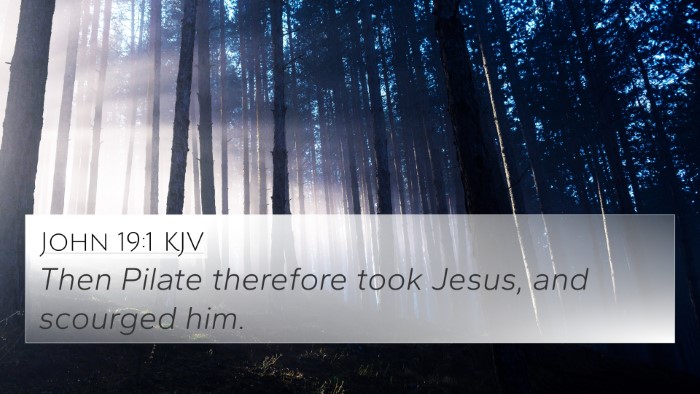Meaning and Analysis of Luke 23:24
Luke 23:24 states, "And Pilate gave sentence that it should be as they required." This verse captures a pivotal moment in the trial of Jesus, where Pontius Pilate acquiesces to the demands of the crowd for Jesus' crucifixion. The significance of this action is profound, influencing not only the trajectory of Jesus’ life but also the course of Christian belief and history.
Contextual Overview
This verse occurs within the narrative of Jesus' final hours leading up to His crucifixion. Pilate, the Roman governor, is faced with the decision to either protect an innocent man or appease a tumultuous crowd, illustrating the moral complexities faced by leaders in times of crisis. The crowd's insistence on Jesus' crucifixion reflects the prevailing sentiment and foreshadows the sacrifice he is to make for humanity.
Commentary Insights
- Matthew Henry's Commentary:
Henry emphasizes Pilate's moral failure, highlighting how he succumbed to peer pressure, despite recognizing Jesus’ innocence. Henry often notes the spiritual implications of this moment, including the fulfillment of prophecy regarding Christ's suffering.
- Albert Barnes' Notes:
Barnes discusses the political motivations behind Pilate's actions, suggesting that he prioritized his position and the peace in Jerusalem over justice. This perspective invites deeper reflection on the challenges of leadership and justice.
- Adam Clarke's Commentary:
Clarke offers insights into the historical context, providing background on Roman governance and societal expectations. His analysis reinforces the idea that Pilate’s decision was influenced by the desire to maintain control and avoid unrest.
Thematic Connections
This verse connects to several larger biblical themes:
- The nature of authority: Pilate's struggle illustrates the tension between political authority and moral responsibility.
- The fulfillment of prophecy: This moment contributes to the unfolding of the redemptive plan foretold in the Old Testament.
- Humanity's choice: The choice presented by the crowd reflects the ongoing struggle between good and evil that permeates the biblical narrative.
Cross-References
Luke 23:24 can be linked to various other scriptures that deepen the understanding of its significance:
- Isaiah 53:5: "But he was pierced for our transgressions, he was crushed for our iniquities..." - Foretelling the suffering that Jesus would endure.
- John 19:16: "Finally, Pilate handed him over to them to be crucified." - A direct continuation of Pilate's decision leading to Jesus' crucifixion.
- Matthew 27:24: "When Pilate saw that he was getting nowhere..." - Illustrates Pilate's realization of the conflict he faced.
- Acts 2:23: "This man was handed over to you by God's deliberate plan and foreknowledge..." - Speaks to the divine involvement in the events surrounding the crucifixion.
- Luke 18:31: "Jesus took the Twelve aside and told them, 'We are going up to Jerusalem...'" - Highlights Jesus' foretelling of his suffering, aligning with the crucifixion narrative.
- Zechariah 12:10: "They will look on me, the one they have pierced..." - Prophecy regarding the suffering of Christ, noted to have been fulfilled during the crucifixion.
- Matthew 5:11: "Blessed are you when people insult you, persecute you..." - Relates to the persecution faced by Jesus and his followers.
- Revelation 13:8: "The Lamb that was slain from the creation of the world..." - Acknowledges Jesus' sacrifice as part of God's eternal plan.
Understanding Through Cross-Referencing
For those seeking a deeper understanding of Luke 23:24, employing cross-referencing biblical texts provides a broader narrative context. Tools for bible cross-referencing enable the identification of important connections between Bible verses, enhancing one's interpretative skills.
Tools for Bible Cross-Referencing
Utilizing a bible concordance, one may find various bible verses that relate to each other, facilitating a thematic analysis of scripture. These tools act as a guide, aiding in the discovery of the interwoven nature of the biblical narrative.
Comprehensive Bible Study
In a cross-reference bible study, one may explore how different verses illuminate each other. For example, by analyzing the parallels between Luke 23:24 and corresponding verses in the Gospels, one can discern the multifaceted portrayal of Pilate’s decision.
Conclusion
Luke 23:24 represents a crucial moment in the Passion narrative. Understanding this verse within the broader theological context, cross-referenced with other scriptures, aids believers in grasping the depth of Jesus' sacrifice and the complexities of human choice. As we reflect on these connections and themes, we uncover the rich tapestry of truth woven throughout the scriptures.
